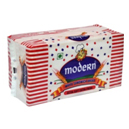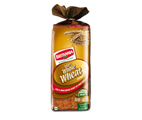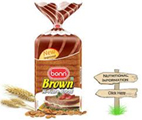ABOUT EDITORIAL ARTICLES RECIPES PROJECTS NEWS & VIEWS BAKERY LEADERS FORMS
India’s bread Industry to reach Rs. 53 billion by 2020
The Indian Bread industry has come a long way since the 1990’s. Bread has evolved from being perceived as a basic breakfast food item to being a confectionary item for some customers. Over the years, increasing disposable incomes, urbanization, and changing consumer preferences and lifestyles have given a boost to the bread industry. The bread industry in India, valued at Rs.33.0 billion (USD 0.51 billion) in financial year 2015, has been growing at a CAGR of 9% over the last three years. The industry is expected to grow at a CAGR of 10% and reach INR 53 billion (USD 0.82 billion) by the year 2020. Despite Indians becoming more health conscious, white bread continues to dominate the market with a 75.0% market share. While demand for brown and nutritious breads is expected to grow, this segment currently accounts for mere 20% of the total share. India’s bread industry is dominated by unorganized players contributing to about 55% of the total market. However, their share is expected to decrease in the coming years, primarily due to increasing health awareness among consumers and their preferences shifting towards quality food products. In the organized sector, Britania Industries and Modern Foods Industries are market leaders with nearly 45% share of organized market. Growing per capita disposable income and changing lifestyles are dicatating a clear shift in customers’ buying patterns. They are aware of and prefer nutritional and premium bread compared to white bread. This change will drive India’s premium bread market. Manufacturers are now keen to tap the rising afflient urban population and are introducing premium and healthier variants in the market. The bread market is concentrated around tier I and tier II cities due to higher disposable incomes and more brand awareness among consumers. Companies are entering the market with concepts such as liver bakery- cum- cafes to cater to the youth who are looking for a nice ambience and access to WiFi, where they can relax and try new products. International players like Au Bon Pain and Le Pain Quotidien, and domestic chains such as Theobrama and La Opera are expanding from their current format to the sit-in-fafe format. Now, players in the organized sector are increasing their focus on tier II and Tier III cities as well, given the improving infrastructure and customers changing buying patterns in smaller cities.
(Source: www.valuenotes. biz)








